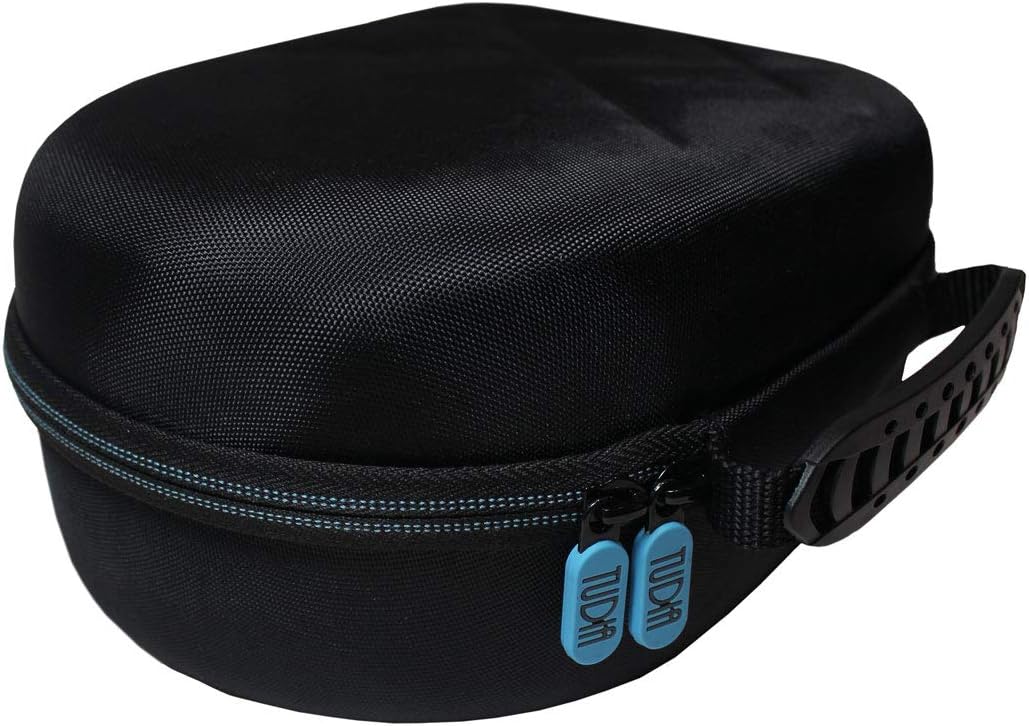Exploring the Reach of DAB Radio
In the age of globalization, the world is becoming increasingly interconnected. And with advancements in technology, the ability to tune into international radio stations has never been easier. DAB Radio, short for Digital Audio Broadcasting, has gained popularity for its crystal-clear sound quality and wide variety of stations. But can you receive international stations on DAB Radio? This article explores the reach of DAB Radio and its potential for tuning into international broadcasts, opening up a world of possibilities for avid radio listeners.
Exploring the Reach of DAB Radio: Receiving International Stations
DAB radio, or Digital Audio Broadcasting, is a modern technology that has become increasingly popular for radio broadcasting. With DAB radio, listeners can enjoy a wide range of stations with improved sound quality and additional services. While DAB radio is most commonly associated with local and national stations, many listeners wonder if it is possible to receive international stations on DAB. In this article, we will explore the reach of DAB radio and discuss the factors that can affect the reception of international stations.
Understanding DAB Radio
Before delving into the availability of international stations on DAB, it’s important to have a clear understanding of how DAB radio works. DAB radio uses digital signals to transmit audio content, as opposed to traditional analog radio which uses analog signals. This digital transmission allows for a more efficient use of the radio spectrum, resulting in improved sound quality and a greater choice of stations.
DAB radio also offers additional features and services, such as text and visual information that can be displayed on compatible receivers. This additional information can include song titles, artist names, and even news headlines. Furthermore, DAB radio receivers often can automatically scan and tune into available stations, making it easier for listeners to find their favorite channels.
The Benefits of DAB Radio
One of the key advantages of DAB radio is the improved sound quality it offers compared to analog radio. Digital signals are less prone to interference and deliver a clearer and more consistent audio experience. This means that listeners can enjoy their favorite music, shows, and podcasts without the background noise and static commonly associated with analog radio.
Another benefit of DAB radio is the greater choice of stations available. With traditional FM/AM radio, listeners are typically limited to a handful of local and national stations. DAB radio, on the other hand, offers a much wider range of stations, including niche genres and international channels. This allows listeners to discover new music and explore different cultures through radio programs.
In addition to the increased station options, DAB radio also offers additional information and services. As mentioned before, compatible receivers can display text and visual information alongside the audio content. This can be particularly useful for news and sports updates, as well as providing more context and background information about the programs being broadcast.

The Availability of International Stations on DAB
While DAB radio primarily focuses on local and national stations, there are international stations available on this platform as well. The availability of international stations on DAB can vary depending on several factors, including broadcasting agreements, licensing, and the expansion of DAB coverage.
Broadcasters and governments have to negotiate agreements and obtain appropriate licenses to broadcast their stations on DAB. These agreements can determine which international stations are available in a particular country or region. Additionally, the expansion of DAB coverage plays a crucial role in the availability of international stations. As DAB coverage expands, there is a greater chance of international stations being included in the lineup.
Factors Affecting Reception
Receiving international stations on DAB can be influenced by various factors. The most significant of these factors is signal strength. The strength of the DAB signal at a specific location determines how well the receiver can pick up and decode the transmitted audio. If the signal is weak, the audio quality may be compromised or the station may not be received at all.
Another factor that can affect reception is multipath interference. This occurs when the DAB signal arrives at the receiver through multiple paths, resulting in overlapping signals. This can cause distortion and interruptions in the audio playback. Multipath interference is more likely to occur in urban areas with tall buildings or in areas with geographical features that can cause signal reflections.
Obstructions can also impact the reception of international stations on DAB. Buildings, hills, and other physical obstacles can block or weaken the DAB signal, leading to a degraded audio experience. Similarly, the distance between the receiver and the transmission tower plays a role in signal strength. The farther away a listener is from the tower, the weaker the signal will be.

Antenna Considerations
The type, placement, and orientation of the DAB antenna can significantly impact reception. There are different types of DAB antennas available, including indoor antennas, outdoor antennas, and even car antennas. The choice of antenna depends on the specific requirements and constraints of the listener.
Indoor antennas are suitable for listeners who primarily use their DAB radio indoors. These antennas can be placed on a windowsill or positioned near the radio to improve reception. Outdoor antennas, on the other hand, are designed for listeners who want to achieve better reception in areas with poor signal strength. These antennas are typically mounted on rooftops or high positions to maximize signal capture.
The orientation of the antenna is also important. In general, it is recommended to point the antenna towards the transmission tower to enhance signal reception. Experimenting with different orientations can help find the optimal position for the antenna.
Frequency Band
DAB radio operates on two different frequency bands: VHF (Very High Frequency) and L-Band. Understanding the differences between these frequency bands is crucial for receiving international stations on DAB.
VHF, also known as Band III, operates between 174 and 240 MHz. This frequency band is used for most national and local DAB services and is widely adopted across countries. On the other hand, L-Band operates between 1452 and 1492 MHz and offers a higher capacity for data transmission. This frequency band is particularly relevant for international stations since it allows broadcasters to transmit more content and services.
The availability of international stations on DAB depends on whether they choose to broadcast on the VHF or L-Band frequency. While VHF is the more common choice for most DAB services, some international stations may opt for L-Band to reach a wider audience or provide additional content.
Transmission Power
The transmission power of DAB stations can influence the range and reception of international stations. Higher transmission power generally allows for a greater coverage area and improved reception quality. However, transmission power is regulated by governmental authorities to avoid interference with other services and ensure efficient use of the radio spectrum.
Different countries have different regulations regarding the maximum power outputs for DAB transmissions. These regulations take into account various factors such as population density and geographical considerations. Broadcasters must adhere to these regulations to provide a reliable service while minimizing any potential interference.
Weather Conditions
Weather conditions can play a role in the reception of DAB radio signals, including international stations. Atmospheric propagation effects, such as rain, snow, fog, or storms, can attenuate or weaken the DAB signal. This can result in reduced signal strength and potentially affect the quality of the received audio.
Tropospheric ducting is another weather-related phenomenon that can impact DAB signal propagation. It occurs when temperature and humidity gradients cause the DAB signal to refract and propagate over long distances. This can lead to the reception of signals from distant transmission towers, including international stations, that would not typically be reachable.
Ionospheric conditions, influenced by solar activity, can also affect DAB signal propagation. During periods of increased solar activity, ionospheric disturbances can occur, resulting in signal degradation and interference.
Receiver Capabilities
The receiver capabilities of a DAB radio are another important aspect to consider when trying to receive international stations. Not all DAB radios are created equal, and some receivers may have limitations or compatibility issues that can affect the reception of international stations.
It is essential to ensure that the DAB radio is capable of receiving signals on the frequency band used by international stations. Additionally, the receiver should support the audio codecs and protocols used by these stations to ensure proper decoding and playback.
Finding International Stations on DAB
If you are interested in listening to international stations on DAB, there are several avenues to explore. One option is to check national DAB networks for any international stations that may be included in their lineup. Many countries have national DAB networks that offer a variety of local, national, and international stations.
Online DAB directories can also be a valuable resource for finding international stations. These directories provide comprehensive listings of DAB stations, including information about their location, frequency, and programming. They allow listeners to search for specific international stations or browse through different genres and regions.
Another option is to use DAB radio apps, which are available for smartphones and tablets. These apps connect to the DAB network and allow users to tune into different stations, including international ones. Some apps may require an internet connection, while others can access DAB signals directly if the device has a built-in DAB receiver.
DAB+ and DMB Radio
While DAB has been the dominant standard for digital radio broadcasting, there are newer standards that offer improved features and capabilities. DAB+, for example, uses more advanced audio codecs to provide better sound quality and more efficient use of the radio spectrum. DAB+ is widely adopted in several countries and offers enhanced reception for listeners interested in international stations.
Digital Multimedia Broadcasting (DMB) is another standard that combines audio and visual content for a richer multimedia experience. DMB is particularly relevant for international stations that want to provide visual information alongside their audio programming.
These next-generation DAB standards can further expand the reach of international stations and provide listeners with a more immersive and engaging radio experience.
In conclusion, while DAB radio is primarily associated with local and national stations, it is indeed possible to receive international stations on this platform. The availability of international stations on DAB depends on various factors, including broadcasting agreements, licensing, and the expansion of DAB coverage.
Factors such as signal strength, multipath interference, obstructions, distance from transmission towers, antenna considerations, frequency bands, transmission power, weather conditions, and receiver capabilities can all affect the reception of international stations. However, with the right equipment, placement, and exploration of available resources such as national networks, online directories, and DAB radio apps, listeners can enjoy the diversity and global reach of international stations on DAB.




